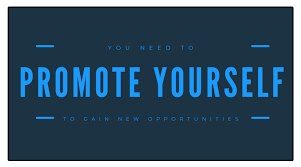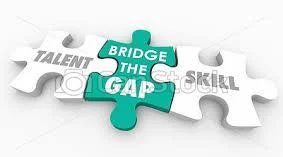Developing SMART goals is not rocket science
You
don’t need to have a post-grad in business marketing to develop SMART goals
that align well with your digital marketing strategy. Online and Google
search is a HUGE Atlantic of Researches Articles Posts on these Niches. Try to refine
your keywords to search for the right resources and information that guide you in
the right direction…
What, Why, and How to Optimize it? Assembling the all components of your
marketing campaign to drive your revenue goal… the ultimate and at large…
This is not a game of quick brown fox jumping
over the lazy dog. We must have to think about and take into consideration:
How
to BEST Agile in a Changing Post-Pandemic & Ukraine Russia War
Be SMART Think SMART Plan SMART in all
cases!!
SMART an acronym is a fact and its optimization
is the center point of this post out of my very ongoing dialogue on Group Advertiser recruitment!
I don’t have any info about their Marketing
Plan and Strategy. I am keen to know all about it!!
The marketing
strategy is only as good as the time you take to verify its effectiveness.
Having the ability to identify if the goals you set have been reached or not
lets you determine what needs to be used more or less and what needs to be
optimized.
Optimization is the synchronization to make
healthy syrup by combining it with all ingredients mixture. Setting a SMART
goal can take your digital marketing strategy from a simple collection of
tactics to one driven with purpose.
Why SMART goals are
important in digital marketing?
Effective SMART goals
can help marketing teams clarify their objectives, identify areas of
improvement and create successful advertising campaigns. Using SMART goals in your marketing efforts may increase your overall revenue and improve
customer relationships.
Digital Marketing is an amalgamation of many Tools Tactics and combinations of SEO Social Digital Email Branding Promotion Campaign Sales Advertisement BD CRM + more. So a decision must be taken aligning all sides into consideration
So it will require an integrated measure to align with long and short-term goals and objectives too.
Keep a
close grip on your marketing objectives, know your audience inside out, and
stay rooted.
A marketing team well-equipped with skills and supported top-down with the right resources can realize any goal you set for them.
A goal
is an achievable outcome that is generally broad and long term while an
objective is shorter-term and defines measurable actions to achieve an overall
goal. While different, the two terms are often used
in unison when working on a project. This is because both are essential to
planning and executing a project.
Plans entirely focus closely on an organization's long-term
goals, which may take place over the next three to five years. Strategies
handle upcoming or short-term goals that may happen shortly, usually within the
year.
SMART marketing strategy under your organization’s long-term goals piecemeal to achieve…
Objectives (Short-term) must be taken into an align with the light of long-term goals. To Identify areas of improvement you will require insights:
Present KPIs data and future achievable
improvement to drive. KPIs are numerical values that reflect the
efforts of your marketing strategy. They also give you the information you need
to make decisions that will help you make pivots when things aren’t going as
well and help you celebrate all of the digital wins you’ll realize from your
optimization efforts as follows:
1.
Traffic from organic search
This KPI will give you an accurate gauge of the percentage of
website traffic earned through organic search.
It's possible to attribute traffic flowing to
your site generated by organic searches to your search engine optimization (SEO) strategy.
2.
Website or landing page conversion rate
Whether you've developed a dedicated (and great) landing page as part of your campaign or you're directing
prospects to specific pages on your website, understanding how each is
performing regarding conversions is essential.
Gaining
a picture of your conversion rates and comparing these metrics to other pages
on your site will help you identify potential weaknesses or capitalize on
strengths. In doing so, you’ll be able to replicate this success elsewhere.
These
metrics will also help you gain an understanding of how engaging,
user-friendly, and value-driven your content is to target consumers:
·
Bounce rate
·
Average session length
·
Goal conversion rates:
this is a metric designed to visualize when a prospect has completed a niche
campaign goal such as subscribing to a mailing list or sharing a piece of
content, among a raft of other activities, depending on your goals and aims
3. Cost
per click (CPC)
CPC is a valuable digital marketing KPI as it offers a
clear-cut pricing model that will help you to make your campaigns as effective
and cost-efficient as possible.
This KPI will help you to visualize your average spend on your
various paid marketing activities including pay-per-click (PPC), display ads, and retargeting.
The aim is to drive your CPC steadily over time which will
result in more effective, efficient, and economical campaign activities.
In this arena, here are two additional KPIs that you should
track:
·
Cost per acquisition (CPA)
·
Customer lifetime value (CLTV)- this is the most important
customer loyalty and retention FOCUSED factor that fosters long ongoing
relations partnering with customers.
4.
Return on marketing investment (ROI)
As a data-savvy marketer, you will understand the importance of
tracking the ROI for every one of your initiatives or activities. Your digital
marketing ROI dictates how efficiently you are spending your budget on a
particular campaign. By drilling down into this all-encompassing metric, you’ll
be able to tell if your investments are yielding tangible results.
The higher the ROI means the campaign is achieving its goal. A
solid ROI means that your campaign spending is effective. Should your ROI prove
to be low, you’ll be able to drill down into your weakest areas and adjust
accordingly.
For example- You are thinking of starting an advertising campaign on Facebook; you must select an objective first.
Taking into consideration SALES is our PRIME objective.
KPI management is a process by which organizations monitor the performance of
their metric goals and objectives against desired outcomes.
Five of the most
common key performance indicators (KPIs)
·
Revenue growth.
·
Revenue per client.
·
Profit margin.
·
Client retention rate.
·
Customer satisfaction.
Conclusion:
Most importantly- to compare your campaign outcome is to measure the success with old performance. So it will require all old and new campaign data...
Set goals and stay focused
Set achievable and relevant goals
before you start any digital marketing campaign. These could be related to ROI
or other digital marketing KPIs and should align with your budget constraints
and scope. As your campaign progresses, report on these metrics to see if there
are any gaps or if each specific part of your campaign is performing well.
These areas of opportunity can help refine your campaign or create an entirely
new one that caters better to your audience.
Focus on the channels that work
best for you
Focusing on fewer channels can
result in a higher ROI. Identify the channels — such as social, SEO, PPC, or
email — that work most effectively for your brand first. Then, think about how
to reallocate your marketing budget in a way that maximizes your returns.
Test and optimize
Testing your marketing campaigns' work is the only way to know how well they work. Use variable tests to experiment with
new copy, visuals, links, and more to narrow down what your audience responds
to. Not only will testing improve current campaigns, but it’ll also give you a
better starting point when launching new ones.
FOCUSED on Client retention
and Customer satisfaction
Most Importantly- Marketing teams typically cultivate
relationships with customers, because happy customers often recommend a brand
within their social circles. You can use a SMART goal-setting process to
evaluate your customer engagement protocols and inspire loyalty and retention
the key to the long-ongoing partnering relationship with them. By reflecting on
your customer service practices using a guideline, you can find new ways to
personalize advertisements and conduct more successful sales events.
Facts:
Organic search is responsible for 53% of all site
traffic, paid 15% [Study]
Key Points
·
According to Google’s Economic Impact Report, organic search is 5X more valuable than Google Ads.
·
Paid search is a good short-term marketing solution, but organic search creates long-term, compounding
ROI.
·
Social media helps you build your brand, but organic search is what helps you target
high-intent consumers.
·
Organic search doesn’t
just drive qualified traffic and conversions, it also improves brand perception.
Retention ≠ Loyalty
Retention
does not equal loyalty.
A retained customer continues to buy from your brand.
A loyal customer prefers to buy from your brand.
They seek you out. They are your brand ambassador.
You
can get people to come back and purchase again, thereby retaining them, but
retention is a short-term strategy. It feeds into loyalty as a long-term
strategy, whereby there is almost an emotional connection between the brand and
the buyer.
SEO can deliver massive ROI.
But, although digital marketing spending has steadily
increased over the years, so have your options. As a result, online marketing
dollars are split among various activities.
More Resources to read which I used to create
this post:
https://coschedule.com/marketing-strategy/marketing-calendar-template
https://intigress.com/blog/digital-marketing/digital-marketing-smart-goals
https://www.indeed.com/career-advice/career-development/smart-goals-marketing

















